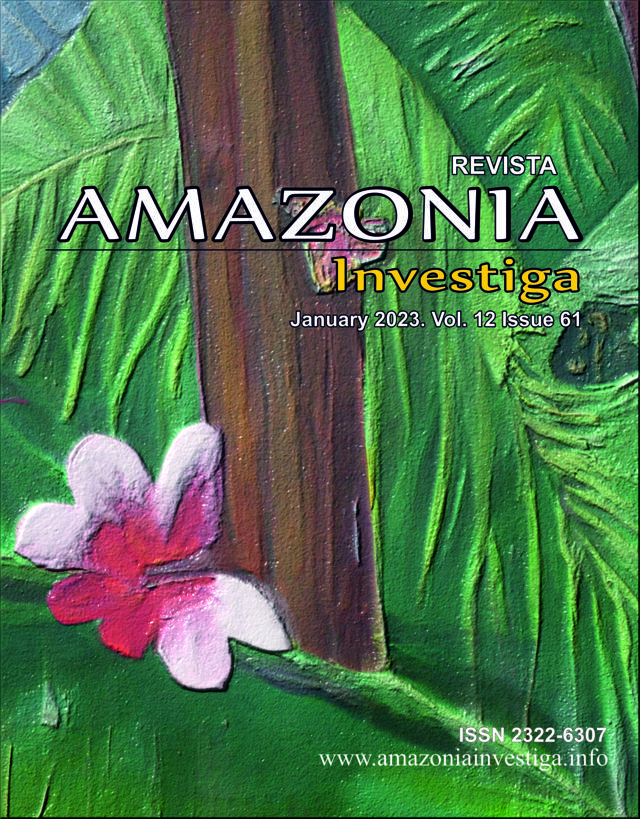Publicado 2023-02-28
Palabras clave
- academic motivation, gamification, learning outcomes, martial law.
Cómo citar
Resumen
The aim of the research was to investigate the impact of gamification on learning during martial law. An analysis of learning results and academic motivation of students who studied using gamification elements and the traditional "lecture-seminar" model was carried out. Academic motivation was assessed using the standard AMS-C questionnaire. It was found that the gamification of education contributed to the increase in the number of students who obtained Level B and reduction in the number of students who had Levels E and D. The use of gamification in general contributed to the strengthening of the motivation for learning, achievement and self-development. Feedback from students revealed that not all students liked the lack of correct action algorithms and the use of leader boards. It was established that the use of gamification during martial law contributed to an increase in the number of positive scores for the test exam and an enhanced intrinsic motivation. Learning motivation decreased among students who were trained with the use of gamification. Students’ external motivation did not change under the influence of gamification of learning.
Descargas
Citas
Bateman, C. (2018). Playing work, or gamification as stultification. Information, Communication & Society, 21(9), 1193-1203. https://doi.org/10.1080/1369118X.2018.1450435
Buckley, P., & Doyle, E. (2016). Gamification and student motivation. Interactive Learning Environments, 24(6), 1162-1175. https://doi.org/10.1080/10494820.2014.964263
Chapman, J. R., & Rich, P. J. (2018). Does educational gamification improve students’ motivation? If so, which game elements work best?. Journal of Education for Business, 93(7), 315-322. https://doi.org/10.1080/08832323.2018.1490687
Cruaud, C. (2018). The playful frame: Gamification in a French-as-a-foreign-language class. Innovation in Language Learning and Teaching, 12(4), 330-343. https://doi.org/10.1080/17501229.2016.1213268
Dalmina, L., Barbosa, J.L. V., & Vianna, H. D. (2019). A systematic mapping study of gamification models oriented to motivational characteristics. Behaviour & Information Technology, 38(11), 1167-1184. http://dx.doi.org/10.1080/0144929X.2019.1576768
Dehghanzadeh, H., Fardanesh, H., Hatami, J., Talaee, E., & Noroozi, O. (2021). Using gamification to support learning English as a second language: A systematic review. Computer Assisted Language Learning, 34(7), 934-957. http://dx.doi.org/10.1080/09588221.2019.1648298
Domínguez, A., Saenz-de-Navarrete, J., de-Marcos, L., Fernández-Sanz, L., Pagés, C., & Martínez-Herráiz, J.-J. (2013). Gamifying learning experiences: Practical implications and outcomes. Computers & Education, 63, 380–392. https://doi.org/10.1016/j.compedu.2012.12.020
Fernandez-Rio, J., de las Heras, E., González, T., Trillo, V., & Palomares, J. (2020). Gamification and physical education. Viability and preliminary views from students and teachers. Physical Education and Sport Pedagogy, 25(5), 509-524, https://doi.org/10.1080/17408989.2020.1743253
Hassan, M. A., Habiba, U., Majeed, F., & Shoaib, M. (2021). Adaptive gamification in e-learning based on students’ learning styles. Interactive Learning Environments, 29(4), 545-565, https://doi.org/10.1080/10494820.2019.1588745
Jati, S. S. P., Subekti, A., & Sulistyo, W. D. (2020). Development of ’Video Bank’ based on prehistoric community life at the sangiran site as an independent Learning media. International Journal of Emerging Technologies in Learning, 15(7), 86–97. https://doi.org/10.3991/ijet.v15i07.13257
Kulhanek, A., Butler, B., & Bodnar, C. A (2021). Motivating first-year engineering students through gamified homework. Educational Action Research, 29(5), 681-706. https://doi.org/10.1080/09650792.2019.1635511
Lakhani, S., & Wiedlitzka, S. (2022). “Press F to Pay Respects”: An empirical exploration of the mechanics of gamification in relation to the christchurch attack. Terrorism and Political Violence, Latest Articles. https://doi.org/10.1080/09546553.2022.2064746
Leclercq, T., Poncin, I., Hammedi, W., Kullak, A., & Hollebeek, L. D. (2020). When gamification backfires: The impact of perceived justice on online community contributions. Journal of Marketing Management, 36(5-6), 550-577. http://dx.doi.org/10.1080/0267257X.2020.1736604
Lo, C. K., & Hew, K. F. (2020). A comparison of flipped learning with gamification, traditional learning, and online independent study: The effects on students’ mathematics achievement and cognitive engagement. Interactive Learning Environments, 28(4), 464-481. http://dx.doi.org/10.1080/10494820.2018.1541910
Luke, K. (2020). The pause/play button actor-network: Lecture capture recordings and (re)configuring multi-spatial learning practices. Interactive Learning Environments, 30(6), 1011-1027. https://doi.org/10.1080/10494820.2019.1706052
Matthew, L. J., Ryan, T. W., Durcikova, A., & Karumbaiah, S. (2022). Improving phishing reporting using security gamification. Journal of Management Information Systems, 39(3), 793-823. https://doi.org/10.1080/07421222.2022.2096551
Rivera, E. S., & Garden, C. L. P. (2021). Gamification for student engagement: A framework. Journal of Further and Higher Education, 45(7), 999-1012. http://dx.doi.org/10.1080/0309877X.2021.1875201
Ruggiu D., Blok, V., Coenen, C., Kalloniatis, C., Kitsiou, A., Mavroeidi, A.-G., Milani, S., & Sitzia, A. (2022). Responsible innovation at work: Gamification, public engagement, and privacy by design. Journal of Responsible Innovation, 9(3), 315-343. http://dx.doi.org/10.1080/23299460.2022.2076985
Schöbel, S. M., Janson, A., & Söllner, M. (2020). Capturing the complexity of gamification elements: A holistic approach for analysing existing and deriving novel gamification designs. European Journal of Information Systems, 29(6), 641-668, https://doi.org/10.1080/0960085X.2020.1796531
Shkuropat, A., Golovchenko, I., & Rudyshyn, S. (2021). The structure of educational motivation of high school students. Pedagogical Sciences: Theory and Practice, 3, 19-26. Retrieved from http://ekhsuir.kspu.edu/123456789/16009
Shkuropat, A.V. (2018). Coherent relations in EEGs of adolescents with partial hearing loss under conditions of an orthostatic test. Neurophysiology, 50(5), 365–371. Retrieved from https://link.springer.com/article/10.1007/s11062-019-09763-2
Shvets, V., Shkuropat, A., Prosiannikova, Y., & Golovchenko, I. (2020). Effect of interleukin-2 on the humoral link of immunity during physical activity. Journal of Physical Education and Sport, 20(6), 3153–3159. http://dx.doi.org/10.7752/jpes.2020.s6427
Sotos-Martínez, V. J., Ferriz-Valero, A., García-Martínez, S., & Tortosa-Martínez, J. (2022). The effects of gamification on the motivation and basic psychological needs of secondary school physical education students. Physical Education and Sport Pedagogy, Latest Articles. https://doi.org/10.1080/17408989.2022.2039611
Suh, A., Wagner, C., & Liu, L. (2018). Enhancing user engagement through gamification. Journal of Computer Information Systems, 58(3), 204-213. http://dx.doi.org/10.1080/08874417.2016.1229143
Toorn, C. V., Kirshner, S. N., & Gabb, J. (2022). Gamification of query-driven knowledge sharing systems. Behaviour & Information Technology, 41(5), 959-980. http://dx.doi.org/10.1080/0144929X.2020.1849401
Xu, H., & Hamari, J. (2022). How to improve creativity: A study of gamification, money, and punishment. Behaviour & Information Technology, Latest Articles. https://doi.org/10.1080/0144929X.2022.2133634
Yang, C., Ye, H. J., & Feng, Y. (2021) Using gamification elements for competitive crowdsourcing: Exploring the underlying mechanism. Behaviour & Information Technology, 40(9), 837-854. http://dx.doi.org/10.1080/0144929X.2020.1733088











